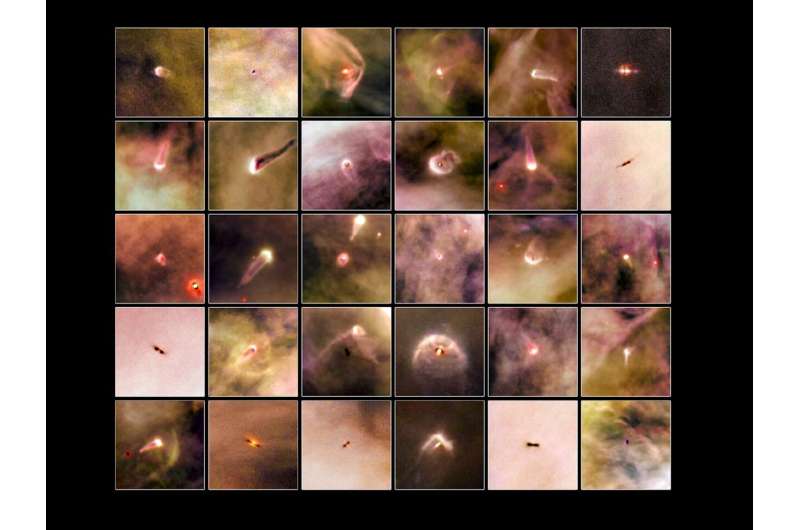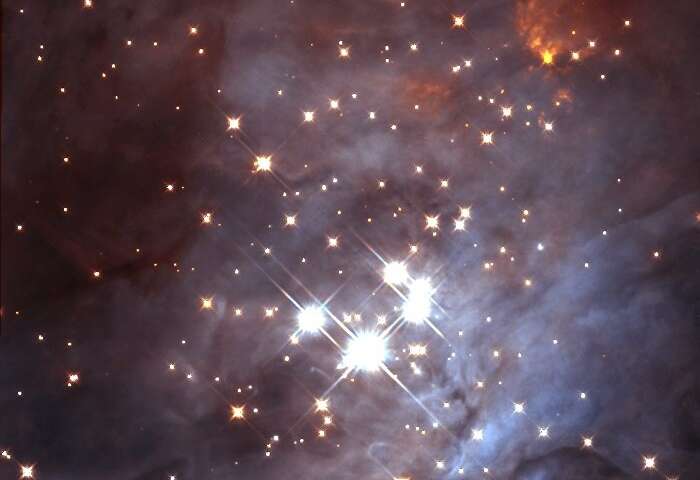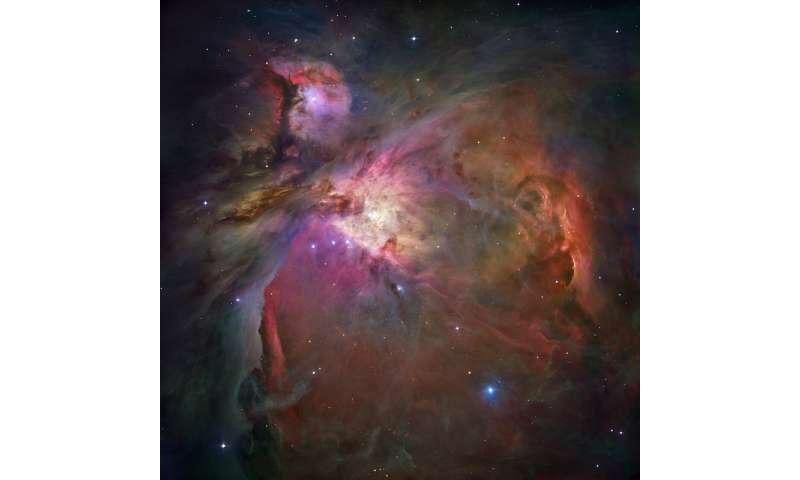Many planetary systems prematurely evaporate into thin air

When stars are born, large clouds of gas and dust form that are known as circumstellar discs. Research by Ph.D. candidate Francisca Concha-Ramírez shows that strong radiation from neighboring stars soon evaporates the dust in these discs, which can prevent planet formation at an early stage. Ph.D. defence on 6 April.
Ever stared at the night sky and wondered where we come from? Francisca Concha-Ramírez's Ph.D. research brings us one step closer to an answer. She studied circumstellar discs, distant ancestors of planetary systems. "These are enormous rotating discs of gas and dust that develop around young stars. The dust in these discs can ultimately form planets, but if there are stars close by, the dust is swiftly evaporated. Planets must therefore form before the dust is destroyed."
Difficult calculations
With the aid of simulations, Concha-Ramírez calculated the mass of thousands of these discs. The mass is to a large extent equal to the amount of dust in a disc. The calculations had to take account of all the interactions between the discs and stars, which made them extremely complicated. "Our calculations were so complex that we had to request access to Cartesius, the Dutch national supercomputer," says Concha-Ramírez. "And even with such a powerful computer, it still took two weeks before we had a result."
Light-evaporation
Concha-Ramírez then compared the results of the simulations with observations such as photos of the Orion constellation. "Our simulations matched the observations. We saw that discs with many neighboring stars were lighter than discs with few neighboring stars. The radiation from stars evaporates the dust in the discs in a process that we call photoevaporation. Photoevaporation is the biggest cause of the discs' weight loss."
-

The Trapezium cluster, in the Orion Nebula. This is similar to the regions Concha-Ramírez simulated. Credit: NASA; K.L. Luhman (Harvard-Smithsonian Center for Astrophysics, Cambridge, Mass.); and G. Schneider, E. Young, G. Rieke, A. Cotera, H. Chen, M. Rieke, R. Thompson (Steward Observatory, University of Arizona, Tucson, Ariz.) -

The Orion Nebula, located in the constellation Orion. Credits: NASA, ESA, M. Robberto ( Space Telescope Science Institute/ESA) and the Hubble Space Telescope Orion Treasury Project Team
Cosmic Collision
Concha-Ramírez's research results have interesting consequences for our ideas on the our solar system's origin. For our solar system to have become what it is now, something must have happened in its early years to allow it to escape the strong radiation of other stars. "A collision may have taken place between our circumstellar disc [which later became the solar system, ed.] and another disc," says Concha-Ramírez. "We can see proof of this at the edge of our solar system, in the region of the planet Neptune. Here there are suddenly much fewer asteroids, which suggests that another disc could have nabbed material. And there is another interesting clue that there might have been a collision between discs: asteroids that, in relation to the Earth, orbit the sun on a different plane. These asteroids probably come from another disc."
Popular science
Concha-Ramírez is aware that she is not the only one to have questions about the universe. She likes to talk about astronomy in her Spanish blog and podcasts that attract thousands of listeners and readers, and helped set up Astronomy on Tap, astronomy lectures in Grand Café de Burcht in Leiden. "Seeking answers is part of being human. I love astronomy and sharing it with others," she explains. "Lots of people think they're not clever enough to understand astronomy. I disagree. Everything can be explained in such a way to make it comprehensible to anyone."
Provided by Leiden University




















